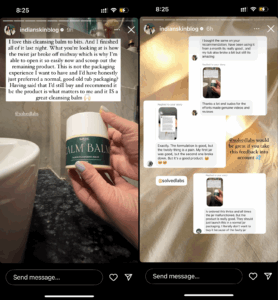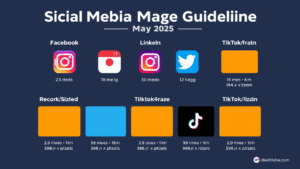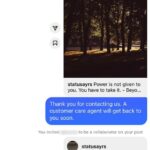
Pinterest has evolved from a simple visual search engine into a powerful platform for affiliate marketers.
If you’re looking for a creative and scalable way to earn online, leveraging Pinterest with affiliate programs could be your best move in 2025.
But success doesn’t come from randomly choosing products to promote — it comes from selecting the right programs for your audience and testing offers strategically.
In this guide you’ll discover the top affiliate programs for Pinterest, how to pick the ones that fit your niche, how to test them for maximum results, and how to build a reliable income stream step-by-step.
Top 9 Affiliate Programs for Pinterest Creators
The key is finding offers that naturally fit Pinterest’s visual and discovery-driven ecosystem. Here are nine standout affiliate programs to consider this year.
Amazon Associates
Ideal for almost any niche thanks to its massive product catalog. Whether you’re pinning fashion inspiration, home decor ideas, or kitchen gadgets, Amazon probably has it. Just keep in mind the short 24-hour cookie window means you’ll need to drive quick action.
ShareASale
Offers a vast network of merchants across multiple niches. From boutique clothing brands to home improvement tools, it’s a goldmine if you want flexibility. It also provides helpful dashboards to track your performance easily.
Etsy
Perfect for creators whose audience loves handmade, vintage, or unique finds. Pins showcasing beautiful, one-of-a-kind items can generate a lot of clicks and saves, making Etsy a natural fit for Pinterest’s audience.
Tailwind
Tailwind’s affiliate program is a perfect complement to Pinterest marketing content. If you’re educating your audience on Pinterest strategies, naturally introducing Tailwind as a scheduling tool fits seamlessly.
Wayfair
A great match if your content leans toward home decor, DIY, or renovation inspiration. Their 7% commission rate and huge product catalog offer plenty of opportunities to monetize seasonal and evergreen trends.
ClickBank
The go-to for digital products, such as online courses, fitness plans, and e-books. With commissions reaching up to 75%, it’s one of the highest-paying platforms. Ideal for educational content that promises a transformation.
Canva
This affiliate program fits naturally with Pinterest’s creator base. By promoting Canva’s design tools, templates, and courses, you can earn attractive commissions while offering value to business owners, bloggers, and creators.
Shopify
Ideal for audiences interested in launching e-commerce businesses. Its affiliate payouts are some of the highest available, ranging from $58 to $2,000 per sign-up depending on the plan.
CJ Affiliate
Connects Pinterest creators with top brands across fashion, tech, travel, and more. With reliable tracking, strong commissions, and hundreds of merchant options, it’s a great choice for creators looking to promote trusted names their audience already loves.
Each of these programs offers different strengths, and choosing the right ones depends heavily on your audience and the type of content you create.
How to Pick the Best Affiliate Programs for Your Pinterest Strategy
Picking a strong affiliate program isn’t just about commissions — it’s about fit, trust, and long-term scalability.
Start by considering your audience’s interests.
Ask yourself, “What do they come to Pinterest looking for?” A creator focused on DIY home projects will likely have more success promoting Wayfair or Etsy than digital VPN services. Relevance builds trust, and trust leads to clicks.
Another factor is cookie duration. Programs like Tailwind and ClickBank offer longer cookies (30-90 days), which means more time for potential buyers to convert. Meanwhile, Amazon’s 24-hour window requires faster decision-making from your audience.
Commission rates also matter, but don’t let them blind you. A 4% commission on a $2,000 piece of furniture might be better than a 40% commission on a $20 eBook (though both will of course depend on the quantity of items sold).
Finally, check if the affiliate program provides creative resources like banners, product photos, and sample copy. Pinterest is a visual platform, so having great imagery makes it much easier to create eye-catching Pins.
Remember, the “best” affiliate program isn’t necessarily the one that pays the most; it’s the one that feels natural and valuable to your followers.
Why Testing Affiliate Offers on Pinterest Is Critical (and How to Do It)
Once you’ve chosen a few programs, testing is where you separate the good ideas from the great ones.
Instead of pinning a single image and hoping for the best, create multiple variations.
Design a few different Pins for the same affiliate product.
Experiment with layouts, colors, call-to-action phrases, and styles. A modern, minimal Pin might appeal to one audience, while a colorful, text-heavy Pin might resonate with another.
Pinterest Analytics is your roadmap. Watch metrics like click-through rates, saves, and outbound link clicks closely. Which designs drive the most traffic to your affiliate offers? Which descriptions make people curious enough to click?
Over time, patterns will appear. Maybe your audience loves “Top 5” lists but scrolls past product-only Pins. Maybe bright colors outperform neutrals. Every insight you gather makes your next set of Pins smarter.
How to Blend Affiliate Links into Valuable Pinterest Content
One of the biggest mistakes new affiliate marketers make is turning every Pin into a sales pitch. Pinterest users come for ideas, inspiration, and education — not hard sells.
Instead of “Buy this product!”, think “Here’s how this product can help you.”
For example, if you’re promoting Canva, create Pins titled “How to Design Stunning Pinterest Graphics in Minutes.” Inside the blog post (or landing page) linked to the Pin, you can naturally recommend Canva as the tool that makes it easy.
Blend value and promotion seamlessly. Educational tutorials, tips lists, or “how-to” guides tend to perform much better than direct sales Pins.
When you prioritize helping your audience first, sales often happen as a byproduct.
Tips to Maximize Your Pinterest Affiliate Success
Consistency is critical. Pinterest rewards creators who publish fresh Pins consistently over time.
Align your content calendar with seasonal trends. For example, home decor Pins about “Summer Porch Makeovers” featuring Wayfair products perform better in spring and early summer. Etsy’s unique gift ideas soar around holidays like Mother’s Day or Christmas.
Educational Pins tend to drive more saves, which means more exposure over time. Create Pins that teach, inspire, or solve a small problem.
Always disclose your affiliate relationships. It’s not only legally required (per FTC guidelines), but it also builds long-term trust with your followers. Use “#affiliate” or “#ad” clearly in your Pin descriptions.
Finally, stay flexible. Pinterest trends shift over time. What works today may not work six months from now. Keep testing, stay curious, and be ready to adapt.
Common Pitfalls to Avoid
Affiliate marketing on Pinterest has huge upsides, but only if you steer clear of common mistakes.
- Avoid overloading a single Pin with too many offers. Confused users don’t click. Focus each Pin on promoting one clear idea or product.
- Always optimize your Pins for mobile. Since over 80% of Pinterest traffic comes from mobile devices, vertical Pins with clean designs and legible text perform best.
- Don’t fall into “post and ghost” habits. Just pinning content isn’t enough. Monitor your Analytics, see what’s working, and keep refining your strategy.
- Lastly, respect Pinterest’s guidelines. Avoid spammy practices like repetitive posting, misleading descriptions, or fake giveaways. Protecting your account means protecting your long-term income.
Your First 30 Days: A Simple Action Plan
Getting started can feel overwhelming, but it doesn’t have to be. Here’s a simple 30-day plan to build momentum:
Days 1-3: Research and join 2-3 affiliate programs that best match your niche.
Days 4-10: Brainstorm 10-15 Pin ideas for each program. Focus on educational, inspirational, or helpful angles.
Days 11-20: Design your Pins. Create at least two variations per product.
Days 21-25: Schedule your Pins using Tailwind for maximum exposure.
Days 26-30: Monitor your Analytics. Identify which Pins are gaining traction, and plan your next batch based on what you learn.
Building a Pinterest affiliate strategy is like growing a garden. Plant seeds every day, nurture them, and over time, you’ll create a thriving, sustainable income source.
Are you ready to start? Pick your first program, design your first Pin, and begin your Pinterest affiliate journey today!









